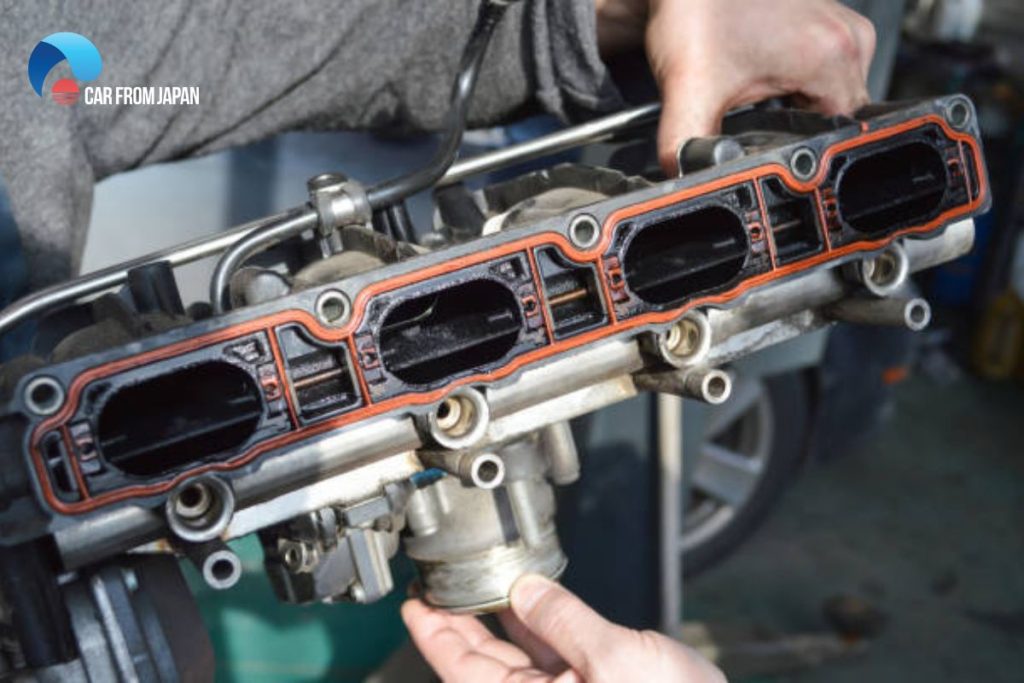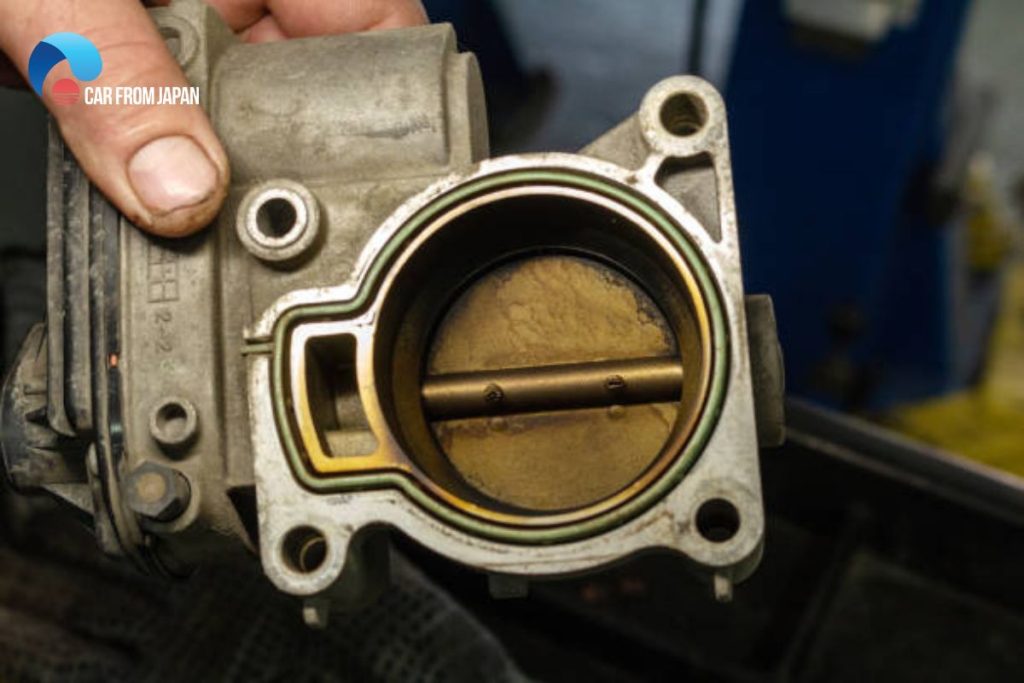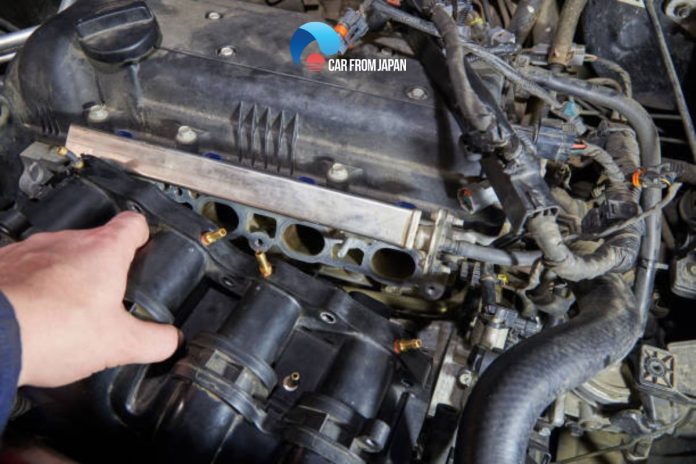As time passes, grime and other carbon deposits accumulate over the different car components. One such part in this category includes an intake manifold. This buildup can affect performance and fuel efficiency. But don’t worry, you don’t always need a major engine overhaul to tackle this problem. This guide will walk you through a simple process of how to clean intake manifold so that you can do it yourself, and without removing this part.
Contents
What Does An Intake Manifold Do In A Car?
The primary function of the intake manifold is to evenly distribute the combustion mixture of air and fuel to all the intake ports of the engine’s cylinders.
Indeed, it acts as a combustion area for the fuel and air to optimize the performance and efficiency of the engine.
In case the carbon builds up inside this inlet manifold, the fuel and air ratio will get imbalanced, resulting in more fuel burn, air pollution, and loss of horsepower.
Here’s a breakdown of its role:
Air delivery
The intake manifold starts its journey by receiving air drawn in through the air filter. This air is then channeled through a series of passages within the manifold.
Fuel mixing
Fuel injectors, strategically placed within or near the manifold, spray a fine mist of fuel into the incoming air stream. This precise mixing of air and fuel is essential for efficient combustion.
Distribution
The manifold’s intricate design ensures that the air-fuel mixture is evenly distributed to each cylinder. This balanced delivery is crucial for smooth engine operation and optimal power output.
Hence, if the intake manifold is not working properly, it’s a call for immediate cleaning.

Systematic Procedure of How To Clean Intake Manifold Without Removing
To your surprise, the intake manifold can be cleaned without the help of a professional (only, if the person is comfortable and confident, enough to do so).
And, in this regard, here are certain simple steps, explaining how to clean an intake manifold without removing it from the car.
Tips and Warnings
Park the vehicle in an airy space to avoid the suffocation caused by the exhaust fumes.
1. Prepare necessary tools
Power Foaming Cleaner– This intake manifold cleaner is made especially for the safe removal of grime, gum, varnish, and other carbon deposits in the throttle and intake manifold.
Clean microfiber cloth – Required to remove the excess liquid from the car’s engine.
Gloves (household) – For the safety of hands from the engine’s heat and harmful chemicals.
Basic mechanic tools– Like, wrenches, and screwdrivers for the removal of hoses/tubes.
2. Detach the throttle and air intake duct
Here, disconnecting the throttle doesn’t mean the removal of it from the car’s engine. Rather, it refers to the separation of the throttle valve from the air intake tube.
Point to Remember: During this course of action, keep the engine off.
3. Clean the throttle valve
Next, spray the power foam on the throttle valve and then clean the excess liquid on its plate using the cotton cloth. Finally, attach the air intake tube to the throttle valve.

4. Wipe dirt from intake manifold
Like the throttle valve, the vacuum hose is also first detached from the inlet manifold. This step on how to clean an intake manifold tutorial today is necessary for the spraying of power foam into the vacuum line.
Next, allow the sprayed power foam to settle inside the line for five minutes. Followed by this, connect the intake manifold back to the vacuum hose.
During this process, spray the foam when the engine is at fast idle and keep the engine off, when the sprayed foam is settling down.
Overall, this systematic process of how to clean an intake manifold, if performed successfully, will surely run the engine at its maximum performance.
FAQs on Intake Manifold Cleaning
Is it safe to clean the intake manifold?
The most crucial reason to clean your intake manifold on a regular basis is to prevent engine damage.
Even the smallest particles can cause havoc on your components, rendering repair difficult. The simplest method to avoid this is to keep your intake manifold and filters clean at all times.
Is cleaning the intake manifold beneficial to car performance?
Removing carbon deposits, oil, and debris when cleaning inlet manifold can assist your engine in receiving the right amount of air and fuel combination, resulting in increased power and acceleration and making it easier to handle difficult terrain.
Can carb cleaning be sprayed into the intake manifold?
Spraying carb cleaning into the air intake can cause irreversible harm, thus use only in regions where inhalation is safe.
Your car will appreciate you taking the time to ensure you’re utilizing these tools appropriately. Avoid shortcuts and allow your automobile to breathe freely once again.
What is the best aluminum intake manifold cleaner?
The greatest cleansers, degreasers, and solvents we discussed include brake cleaner, oven cleaning, and Purple Power, with the Purple Power beating out the others only because it is inexpensive and purpose-built.
However, there are other excellent cleaners available, such as OxiSolv.
Is it possible to polish an intake manifold?
You can use successively finer polishing cones to polish the interior of the intake manifold. Finish with a 120- to 180-grit flap wheel to polish. Consider the benefits of employing a longer shank to reach deeper into the manifold.
How often should you perform an intake cleaning?
Cleaning your intake valves every 30,000 to 40,000 miles is recommended. If you detect any signs such as poor acceleration, black smoke from exhaust, or a rough idle, you should examine the valves.
You should also examine your intake manifold on a regular basis; if it’s dusty, the valves are probably dirty as well.
Check out this video from Adorian E Bismarck to learn more about an easy way to clean any dirty things or carbon buildup on the intake manifold (not for plastic ones):
Conclusion
All engines lose part of their power output with time, and filthy internals and carbon buildup are two of the primary culprits. One of the first things you should do if you want your car to operate as smoothly as it did when it was new is to give it a good cleaning and maintenance.
Fortunately, assuming there are no serious carbon deposits, this is a rather simple task. In that situation, your only option is to remove the intake manifold as well as maybe additional components such as the exhaust manifold and the EGR valve.
Even if you don’t notice many symptoms, it’s a good idea to know how to clean intake manifold because it’s simple to accomplish without removing it.




I wish to know where i can buy the CRC in Kenya